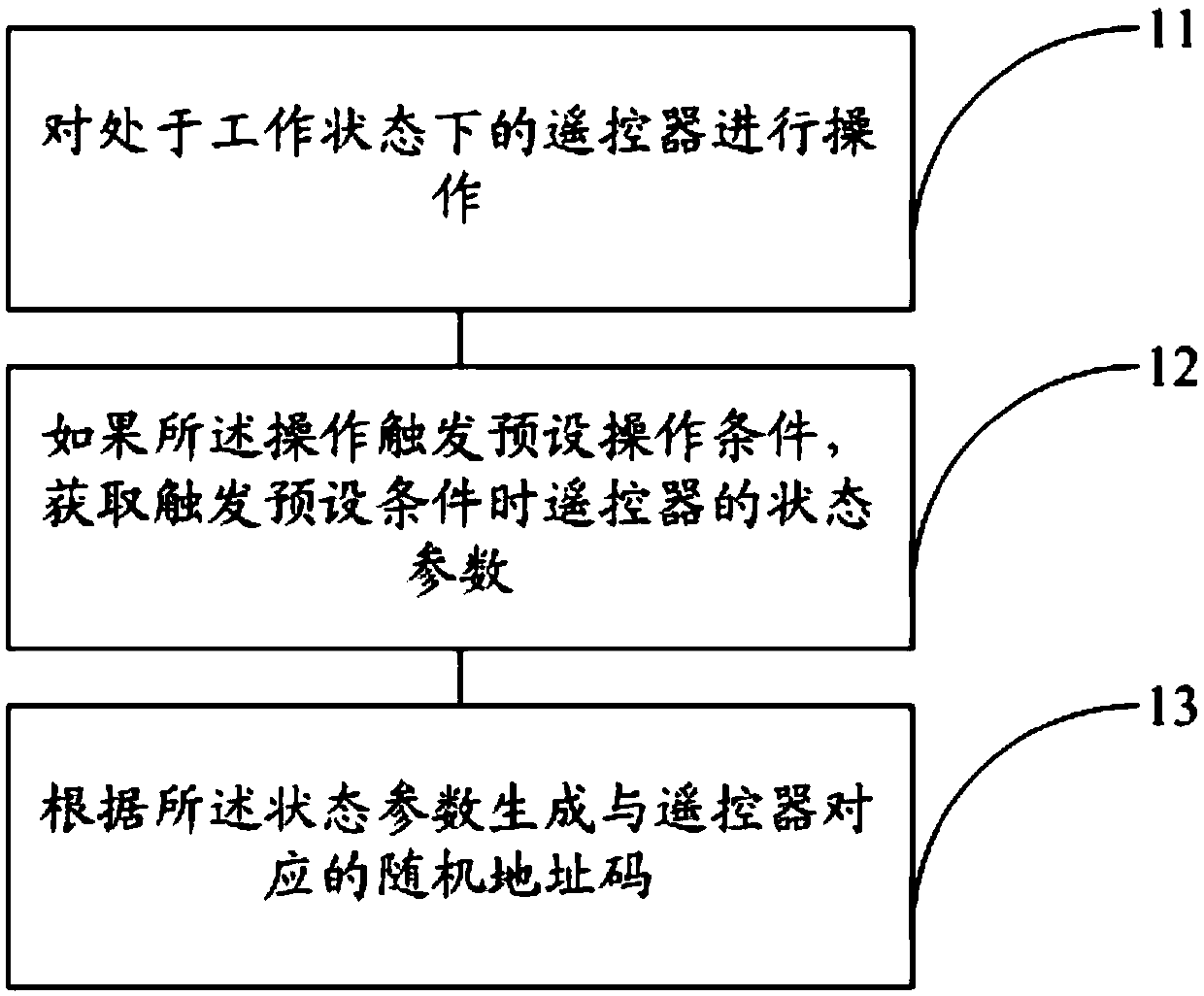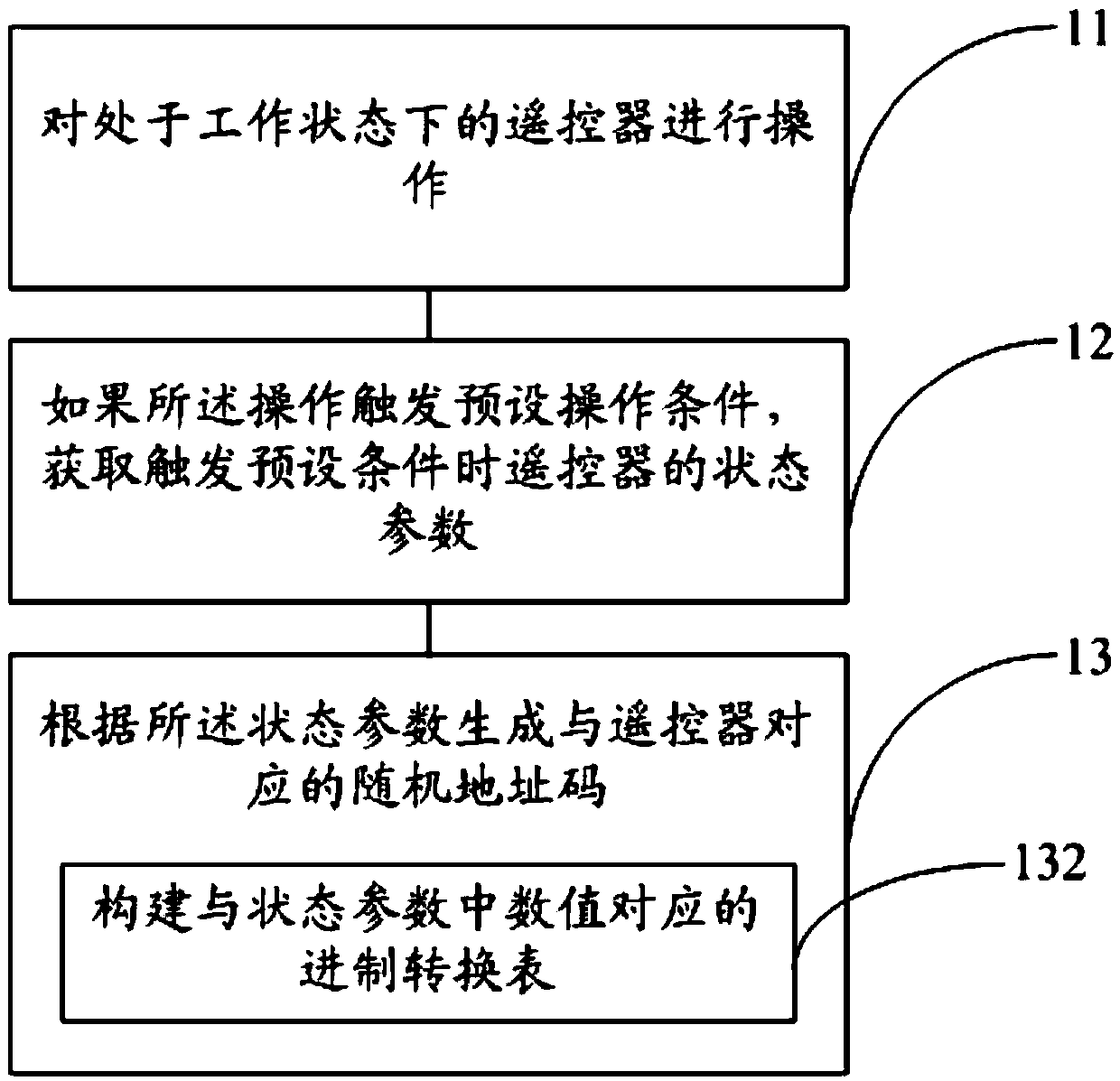Method for generating non-fixed address code
An address code, non-fixed technology, applied in the field of coding, can solve problems affecting the availability of target devices, and achieve the effects of reducing the probability of availability decline, enhancing uniqueness, and reducing production costs
- Summary
- Abstract
- Description
- Claims
- Application Information
AI Technical Summary
Problems solved by technology
Method used
Image
Examples
Embodiment 1
[0046] The invention provides a method for generating non-fixed address codes, which is used to match target devices according to the obtained address codes, such as figure 1 As shown, the generation method includes:
[0047] 11. Operate the remote control in working condition;
[0048] 12. If the operation triggers a preset operation condition, acquire the state parameters of the remote controller when the preset condition is triggered;
[0049] 13. Generate a random address code corresponding to the remote controller according to the state parameter.
[0050] In implementation, the target device is mentioned in the above steps, and the target device in this embodiment refers to a series of household appliances including the warm water toilet seat device mentioned in the background art. Due to design reasons, there is only one address code for the remote controller or target device, and multiple remote controllers must be used to remotely control multiple target devices, wh...
Embodiment 2
[0087] In Embodiment 1, a method for generating non-fixed address codes based on state parameters has been proposed. In the specific explanations 131 and 1311 of step 13, the generation method of random address codes is given. In the sending process, the command length is limited, especially the random address code obtained by constructing the sequence in step 1311 has the defect that the data length is too long. The different generation methods are:
[0088] The generation method, such as figure 2 shown, also includes:
[0089] 132. Construct a base conversion table corresponding to the value in the state parameter.
[0090] In implementation, the base conversion table can be based on the existing hexadecimal or higher-level conversion method. After obtaining the too long random address code, it can be converted with reference to the base conversion table to obtain a relatively shorter data length. The random address code, and then use the converted random address code to...
Embodiment 3
[0105] In the first two embodiments, two implementations of obtaining random address codes by processing the state parameters based on the state parameters and combining with the base conversion table are provided respectively. For the purpose of further improving the randomness of the address code, this embodiment proposes another non-fixed address code generation method, specifically:
[0106] Optionally, the preset operating conditions proposed in step 12 include:
[0107] Set parameter expectations for the target device.
[0108] In an implementation, the preset operating conditions to be triggered mentioned in step 12 include expected values of parameters set for the target device. Considering that the size of the remote control to control the target device is getting smaller and smaller, and there are fewer and fewer physical buttons, it is no longer possible to perform pairing on a smaller remote control or even on a mobile device through a touch screen operation acc...
PUM
 Login to View More
Login to View More Abstract
Description
Claims
Application Information
 Login to View More
Login to View More - R&D
- Intellectual Property
- Life Sciences
- Materials
- Tech Scout
- Unparalleled Data Quality
- Higher Quality Content
- 60% Fewer Hallucinations
Browse by: Latest US Patents, China's latest patents, Technical Efficacy Thesaurus, Application Domain, Technology Topic, Popular Technical Reports.
© 2025 PatSnap. All rights reserved.Legal|Privacy policy|Modern Slavery Act Transparency Statement|Sitemap|About US| Contact US: help@patsnap.com


